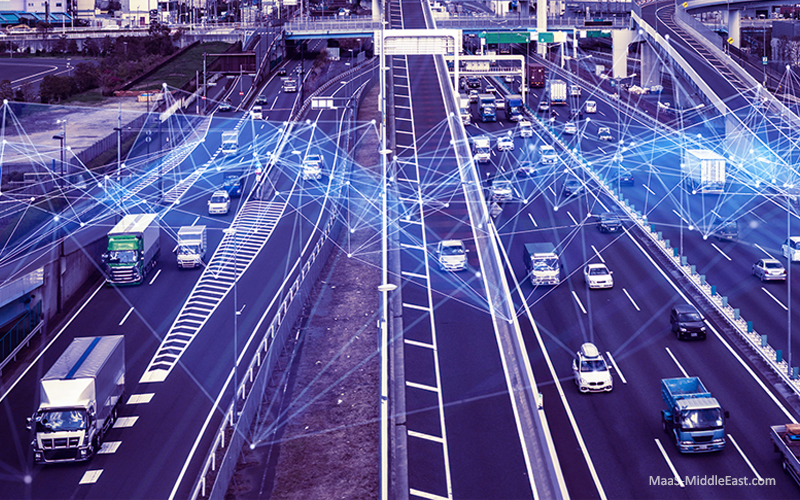The future of automotive mobility is undergoing a major transformation, driven by the convergence of groundbreaking technologies. C.A.S.E. – Connected, Autonomous, Shared, and Electric – represents the emerging paradigm that is poised to shape how we move. This innovative approach, characterized by interconnected vehicles, self-driving capabilities, shared mobility solutions, and electric power, promises to significantly enhance safety, efficiency, and sustainability in our transportation systems.
What is CASE?
CASE stands for Connected, Autonomous, Shared, and Electric. CASE also known as ACES is a transformative framework that is reshaping the transportation landscape. It encompasses four interconnected components:
- Connected: Vehicles equipped with advanced communication technologies that enable them to interact with other vehicles, infrastructure, and the broader transportation network. Imagine cars, trucks, and buses that can “talk” to each other, sharing information about their location, speed, and intended actions.
- Autonomous: Vehicles capable of operating without human intervention, relying on sensors, artificial intelligence, and sophisticated algorithms to navigate and make decisions. These self-driving vehicles have the potential to eliminate human error, a major cause of traffic accidents.
- Shared: Mobility models, such as car-sharing and ride-hailing services, that promote efficient utilization of vehicles and reduce the need for individual ownership. This shift towards shared transportation can alleviate traffic congestion and reduce the environmental impact of transportation.
- Electric: Vehicles powered by electricity, offering significant environmental benefits and contributing to a cleaner transportation ecosystem. By eliminating tailpipe emissions, electric vehicles help to reduce air pollution and combat climate change.
The Future of Transportation
As these four components converge, we can expect to see a transportation system that is safer, more efficient, and more sustainable. Connected, autonomous vehicles could reduce traffic congestion and accidents, while shared mobility services can provide flexible and affordable transportation options. Electric vehicles, powered by renewable energy sources, can help to reduce our reliance on fossil fuels and create a cleaner, healthier environment for all. The future of transportation is exciting and full of promise.

Main Drivers Behind CASE
The rapid adoption of Connected, Autonomous, Shared, and Electric (CASE) technologies is driven by a confluence of factors. Let’s delve into the key drivers:
Technological Advancements:
The rapid adoption of Connected, Autonomous, Shared, and Electric (CASE) technologies is driven by a confluence of factors. Let’s delve into the key drivers:
- Electric Vehicles: Breakthroughs in battery technology, charging infrastructure, and vehicle design have made electric vehicles more practical and appealing to consumers.
- Autonomous Vehicles: Advancements in sensors, AI algorithms, and machine learning have enabled autonomous vehicles to operate safely and reliably in diverse driving conditions.
- Connected Vehicles: The development of advanced communication technologies, like 5G, facilitates data exchange between vehicles, infrastructure, and the cloud, enabling features such as connected vehicle services and autonomous driving.
Public Acceptance
Widespread adoption of CASE technologies hinges on public acceptance. Several factors influence individuals’ willingness to embrace these innovations:
- Safety and Trust: Public perception of CASE technologies, particularly autonomous vehicles, is influenced by safety concerns and trust in the technology. Demonstrating the safety and reliability of CASE systems is crucial for widespread adoption.
- Cost: The initial cost of electric vehicles and autonomous driving systems can be a barrier to entry for some consumers. However, as technology costs decrease and government incentives become more available, the economic viability of CASE solutions is improving.
- Gender Preferences: Research suggests that there may be gender differences in the adoption of CASE technologies, with men being more likely to embrace autonomous vehicles. Understanding these preferences can inform targeted marketing and policy initiatives.
- Tech Familiarity: Consumers who are comfortable with technology are more likely to adopt CASE solutions. Education and awareness campaigns can help bridge the digital divide and encourage wider adoption.
- Driving Habits: Individuals who spend significant time driving may be more likely to adopt CASE technologies, particularly autonomous vehicles, as a way to improve their commuting experience.
- Crash Experience: Individuals who have been involved in car accidents may be more receptive to CASE technologies as a way to enhance safety and reduce the risk of future incidents.
- Urban Living: Residents of urban areas, where traffic congestion and limited parking space are common, may be more likely to adopt shared mobility solutions and electric vehicles.

Regulatory Framework
A robust regulatory framework is essential for the successful implementation of CASE technologies. Governments play a crucial role in establishing clear and consistent regulations to ensure the safety, privacy, and ethical use of CASE systems. Key regulatory considerations include:
- Privacy: Ensuring the privacy of data collected from CASE technologies is a critical concern. Governments need to establish clear regulations to protect consumer privacy and prevent misuse of data.
- Security: Protecting CASE systems from cyberattacks is essential to prevent accidents and ensure the safety of drivers and passengers. Robust cybersecurity measures must be implemented to mitigate risks.
- Licensing: Developing appropriate licensing frameworks for autonomous vehicles and operators is necessary to ensure public safety and accountability.
- Insurance and Liability: Establishing clear insurance and liability rules for CASE technologies is crucial to address potential accidents and financial consequences.
- Usage of Roads: Governments may consider implementing regulations to manage the usage of roads by autonomous vehicles, particularly during peak hours, to prevent congestion and ensure equitable access to transportation resources.
By addressing these key drivers and fostering a supportive regulatory environment, governments, industry, and consumers can work together to accelerate the transition to a CASE-enabled future.





